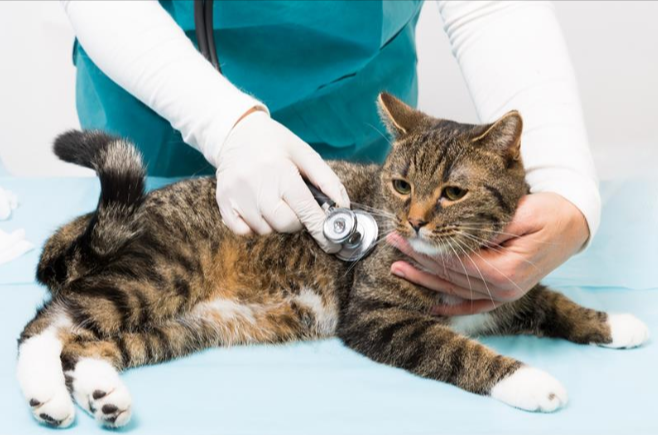A pet insurance deductible is the amount a pet owner must pay out-of-pocket before their insurance plan begins to cover veterinary expenses. It plays a crucial role in determining monthly premiums and reimbursement amounts for medical costs. Generally, a higher deductible leads to lower premiums, while a lower deductible results in higher monthly costs.
There are two main types of deductibles: annual and per-incident, each affecting coverage differently. Understanding how this works helps pet owners select the best option based on their budget and their pet’s healthcare needs. This article will guide you in choosing the right deductible for your situation.
What Is a Pet Insurance Deductible?
A pet insurance deductible is the amount you must pay for your pet’s medical care before your insurance starts covering expenses. Think of it as the initial cost you’re responsible for when filing a claim.
The deductible amount directly affects out-of-pocket expenses—a higher deductible means lower monthly premiums but more upfront costs, while a lower deductible leads to higher premiums but less out-of-pocket spending per claim.
Let’s say your pet insurance plan has:
- A $500 annual deductible
- 80% reimbursement rate
- $1,000 vet bill
Here’s how it works:
- You pay the $500 deductible (since it’s your first claim of the year).
- The remaining $500 is covered at 80%, meaning your insurer pays $400.
- Your total out-of-pocket cost = $500 deductible + $100 (20% of the remaining cost) = $600.
Once you meet your deductible, future claims that year only require the coinsurance payment (your percentage of costs).

With treatments costing around $150 for cats and $210 for large dogs every six months, knowing how deductibles work and checking out these pet insurance statistics can help you plan better.
Types Of Pet Insurance Deductibles
Pet insurance deductibles come in two main types: annual deductibles and per-incident deductibles. The type you choose affects how much you pay out-of-pocket before insurance starts covering expenses. Understanding the difference helps pet owners make the best decision for their pet’s health and budget.
Annual Deductible Pet Insurance
An annual deductible is a one-time payment per policy year before insurance coverage kicks in. Once you meet the deductible, your insurer covers a percentage of all eligible vet bills for the rest of the year.
Here is an example scenario:
- Annual deductible: $500
- Reimbursement rate: 80%
- Vet visit 1: $600 → You pay a $500 deductible, then insurance covers 80% of the remaining $100 ($80).
- Vet visit 2: $800 → Insurance covers 80% of the full amount ($640) since the deductible was already met.
With an annual deductible, you only need to meet the amount once per year, regardless of how many vet visits your pet needs.
Benefits Of An Annual Deductible For Pet Owners
Here are some of the benefits of an annual deductible for pet owners:
- Predictable costs – You pay the deductible once a year, making expenses easier to manage.
- Better for pets with ongoing conditions – Chronic illnesses or frequent vet visits benefit from a single deductible.
- Potential savings – After meeting the deductible, insurance covers a larger share of future vet bills.
- Lower long-term out-of-pocket costs – Compared to per-incident deductibles, you may pay less over time.
Per-Incident Deductible Pet Insurance
A per-incident deductible (or per-condition deductible) means you pay a separate deductible for each new illness or injury before insurance coverage applies.
Here’s how it differs from an annual deductible:
- The annual deductible is met once per year, covering all claims after that.
- Per-incident deductible resets for each new condition, meaning multiple deductibles in a year.
Here is an example scenario:
- Per-incident deductible: $250
- Vet visit 1 (ear infection): $500 → You pay $250, and insurance covers 80% of the remaining $250 ($200).
- Vet visit 2 (broken leg): $1,000 → You pay another $250, and insurance covers 80% of $750 ($600).
If your pet develops multiple health issues, you could end up paying multiple deductibles in a single year.

What Does A $500 Annual Deductible Mean?
A $500 annual deductible means you must pay $500 out-of-pocket for vet expenses before your pet insurance begins reimbursing claims. Once met, insurance covers a percentage of all eligible vet bills for the rest of the policy year.
Example breakdown:
- Annual deductible: $500
- Reimbursement rate: 80%
- Vet bill 1: $400 → You pay the full $400 (deductible not met).
- Vet bill 2: $700 → You pay the remaining $100 of your deductible, then insurance covers 80% of the remaining $600 ($480).
- Total out-of-pocket cost: $500 deductible + $120 (20% of $600) = $620
Once the deductible is met, future vet bills are covered at 80%, reducing your expenses.
| Deductible Amount | Monthly Premium | Out-of-Pocket Costs per Claim | Best for |
|---|---|---|---|
| $100 | Highest | Lowest | Frequent vet visits |
| $250 | High | Lower | Young pets, moderate care |
| $500 | Medium | Moderate | Balanced cost & coverage |
| $750 | Low | Higher | Healthy pets, few claims |
| $1,000 | Lowest | Highest | Emergency-only coverage |

Pet Insurance With No Deductible: Does It Exist?
Pet insurance with no deductible is available, but it comes with higher monthly premiums. Instead of requiring an upfront payment before coverage begins, these policies reimburse eligible vet bills immediately.
Pros of No-Deductible Pet Insurance
- Immediate coverage with no out-of-pocket deductible.
- Ideal for pets needing frequent vet visits.
- Simplify the claims process.
Cons of No-Deductible Pet Insurance
- Higher monthly premiums than deductible-based plans.
- Fewer insurers offer this option.
- Some policies may still include co-pays.
Here is a cost comparison of no deductible vs. high deductible plans
| Deductible | Monthly Premium | Out-of-Pocket Costs per Claim | Best for |
|---|---|---|---|
| No Deductible | Highest | Lowest | Frequent vet visits |
| $250 | High | Lower | Moderate medical needs |
| $500 | Medium | Moderate | Balanced coverage |
| $1,000 | Lowest | Highest | Emergency-only coverage |
No-deductible plans work well for pets with frequent medical needs, but high-deductible plans offer lower monthly costs for those who prefer coverage mainly for emergencies.
Are no-deductible plans really worth it? Take a look at the pros, cons, and costs in our guide on Is Pet Insurance Worth It?

What Is a Good Annual Deductible For Pet Insurance?
Choosing the right pet insurance deductible depends on your pet’s health, your budget, and your preferred monthly premium. A lower deductible results in higher monthly costs but reduces out-of-pocket expenses when making claims.
A higher deductible lowers monthly premiums but means you’ll pay more upfront for vet visits before insurance coverage kicks in. Several factors help determine the best deductible:
- Pet’s age, breed, and medical history – Older pets and breeds prone to health issues may benefit from a lower deductible since they are more likely to need frequent veterinary care.
- Budget and ability to pay out-of-pocket costs – If you prefer lower monthly payments and can afford to cover larger vet bills upfront, a higher deductible may be a better option.
- Desired monthly premium cost – Lower deductibles come with higher monthly premiums, while higher deductibles help reduce premium costs but increase what you’ll pay per claim.
A $500 annual deductible is often a good middle ground, offering a balance between affordability and reasonable out-of-pocket expenses. However, pet owners who visit the vet frequently may find a $100–$250 deductible more cost-effective, while those seeking to minimize monthly premiums may choose a $750–$1,000 deductible for lower overall costs.
What Is a Good Annual Limit For Pet Insurance?
An annual limit is the maximum amount your insurance provider will reimburse for veterinary expenses within a policy year. Choosing the right limit depends on your pet’s medical needs and your financial situation.
- A $5,000 annual limit is suitable for routine care and minor emergencies but may not cover serious illnesses or major surgeries.
- A $10,000 annual limit provides more comprehensive coverage, making it a good option for most pets, especially those at risk for expensive medical conditions.
- Unlimited coverage ensures that all eligible veterinary expenses are covered without a cap, making it the best choice for pets prone to chronic conditions or frequent medical issues.
For most pet owners, a $10,000 annual limit offers a balance between affordability and sufficient coverage, while unlimited plans provide peace of mind for those worried about high medical costs.
Choosing the right deductible also depends on how much you’re paying overall. Check out our 2025 guide on how much pet insurance costs and what it covers.

How To Choose The Right Deductible For Your Pet
Selecting the right pet insurance deductible ensures you get the best balance between affordability and coverage. The ideal deductible depends on several factors, including your pet’s health, your budget, and your comfort level with out-of-pocket expenses.
A pet’s medical needs vary based on age, breed, and past health issues. Younger, healthier pets may not require high coverage, while older pets or breeds prone to hereditary conditions may benefit from a higher annual limit.
Key factors to consider:
- Risk tolerance – If you prefer to minimize surprise expenses, opt for a lower deductible to reduce out-of-pocket costs when claims arise.
- Budget – Higher deductibles lower monthly premiums but require more upfront payment before insurance contributes.
- Pet’s health history – Pets with chronic conditions or breeds predisposed to medical issues may benefit from a lower deductible for better cost management.
Annual vs. Per-Incident Deductible
Which one is better, an annual deductible or a per-incident deductible?
- Annual Deductible – You pay once per policy year, and insurance covers eligible expenses after this threshold is met. Ideal for pets with frequent medical visits or chronic conditions.
- Per-Incident Deductible – You pay a deductible for each new medical condition or incident. Suitable for pets with few health concerns but can be costly if multiple conditions arise.
Here is a checklist for choosing the right deductible:
- Consider your monthly budget – Can you afford higher premiums or prefer lower monthly costs?
- Assess your pet’s health risk – Does your pet require frequent vet visits or have a pre-existing condition?
- Weigh the cost of unexpected emergencies – Would a high deductible put a financial strain on you in case of sudden vet bills?
- Compare annual vs. per-incident deductibles – Which structure aligns better with your pet’s medical history?
- Look at long-term affordability – Will your chosen deductible be sustainable as your pet ages?
Choosing the right deductible pet insurance plan ensures peace of mind and financial stability while securing the best care for your pet.

Related Reads:
Conclusion – A Pet Insurance Deductible Is What You Pay Before Your Insurance Helps With The Costs
A pet insurance deductible is the amount you pay out-of-pocket before your insurance starts covering expenses. It directly affects your monthly premiums and reimbursement rates, making it an essential factor in choosing a policy. Pet owners can opt for an annual deductible (one time per policy year) or a per-incident deductible (applies to each condition separately).
To make the best choice, balance premium costs with expected vet expenses. A higher deductible lowers monthly costs but increases out-of-pocket payments when claims arise. Compare plans carefully to find pet insurance with no deductible or one that best fits your budget and your pet’s needs.
FAQs
Most plans require you to pay upfront and get reimbursed, but some providers offer direct payment options.
You can change your pet insurance deductible, but changes usually apply at policy renewal, and switching may impact your premium.
Routine wellness visits, vaccinations, and preventive care typically don’t count toward your deductible.
Lower deductibles mean higher premiums, while higher deductibles reduce monthly costs but increase upfront expenses per claim.
